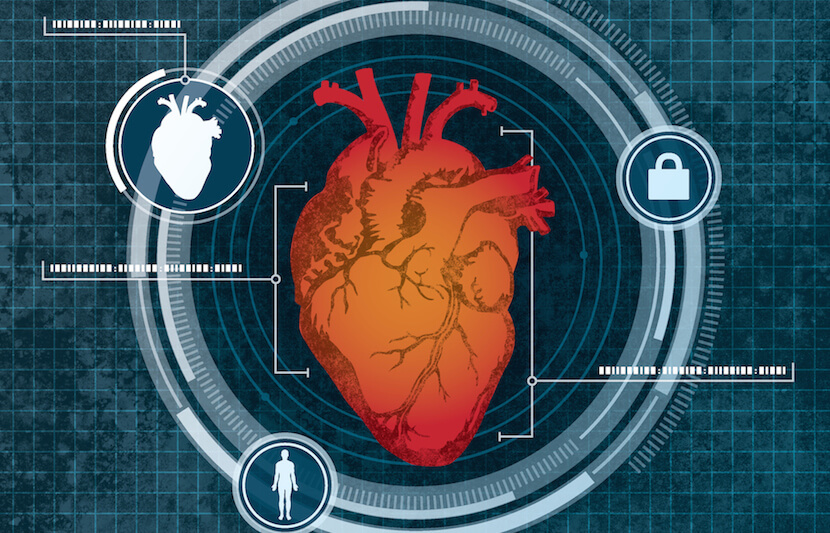A team of researchers, led by Wenyao Xu, assistant professor of computer science and engineering at the University at Buffalo’s School of Engineering and Applied Sciences (UB), has developed a biometric scanner that verifies a computer user’s identity by recognizing the geometry of their heart.
Biometric scanners use physical features as an alternative to password protection. The most common biometric scanner uses fingerprints for authentication. Retinal scanning is another well-known biometric identification technique.
The paper, entitled “Cardiac Scan: A Non-contact and Continuous Heart-based User Authentication System,” will be presented at the 23rd Annual International Conference on Mobile Computing and Communication in Snowbird, Utah. The conference is organized by the Association for Computing Machinery, and will be held from Oct. 16-20.
This is the first time a full organ has been used as an identifier. The device, which took Xu and his team three years to develop, uses the size, shape and movement of the heart to make an identification.
The device operates via radar. “Our design is a direct-current (DC) doppler radar, and it can measure the absolute shape of heart by analyzing the reflected microwaves,” Xu told The University Network (TUN).
Basically, the scanner bounces a microwave signal off of the heart and analyzes the returning wave to determine the shape and size of the muscle.
The device takes eight seconds to record an initial imprint of the user’s heart. After that, the scanner continuously monitors the user to make sure only authorized individuals can access the computer.
“No two people with identical hearts have ever been found,” Xu said in a statement. The shape of a heart, he added, doesn’t change unless an individual is suffering from serious heart disease.
When asked about the possibility of outside interference, Xu said: “It is possible to interfere with our system… [if the] frequency [is known], although we can tune the radar frequency and fix it.”
In short, the system is highly secure.
The system is also safe to use. “We are living in a Wi-Fi… environment every day, and the new system is as safe as those Wi-Fi devices,” Xu said in a statement. “The reader is about 5 milliwatts, even less than 1 percent of the radiation from our smartphones.”
Xu believes the new device is superior to other biometric identifiers, such as fingerprints and retinal scans, because it removes the necessity of logging in and logging off.
He plans on having the device installed in computer keyboards and smartphones in lieu of passcodes and fingerprint readers. “A few computer companies contacted us, and we are working with them to commercialize the product,” he told TUN.
Another application for this technology is in airport security terminals. People can be monitored up to 30 meters away, meaning that Transportation Security Personnel (TSA) personnel could identify and run background checks on airline passengers before they even get in line to go through security.
Given the nature of the scanner, it can also be used in cardiology. “[The scanner] can monitor heartbeats for healthcare applications, such as sleep quality monitoring [and] heart arrhythmia [detection],” Xu told TUN.
The research team includes three students from the UB Department of Computer Science and Engineering — doctoral student Feng Lin (now an assistant professor of computer science and engineering at the University of Colorado Denver), doctoral student Chen Song, and graduate student Yan Zhuang; Kui Ren, SUNY Empire Innovation Professor; and Changzhi Li, associate professor of electrical and computer engineering at Texas Tech University.



